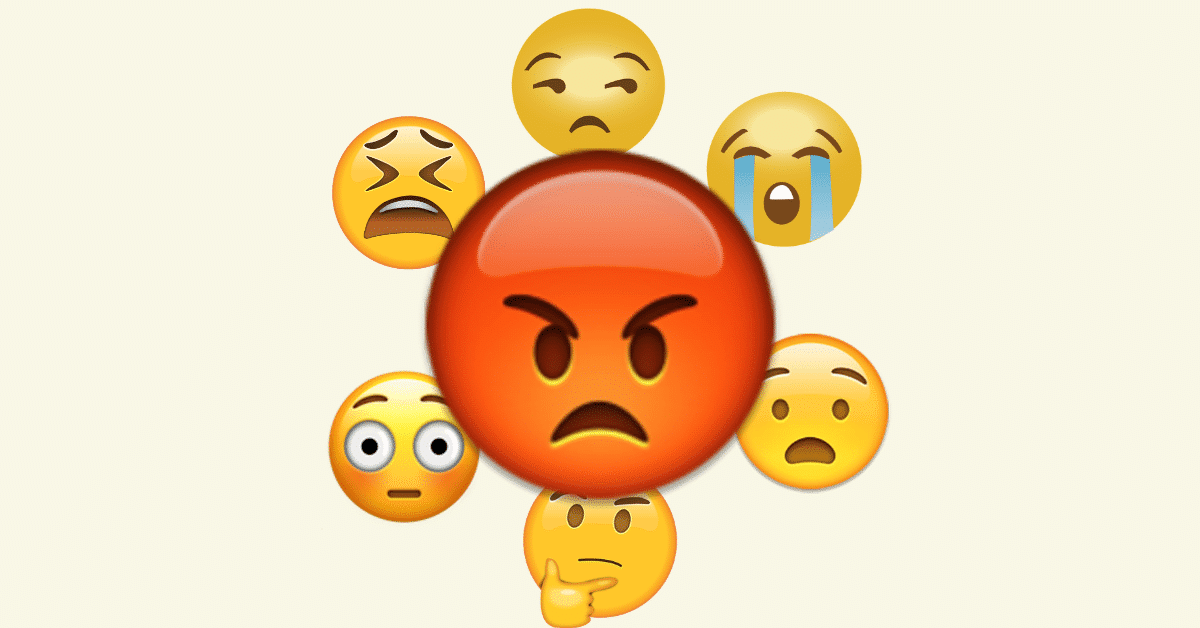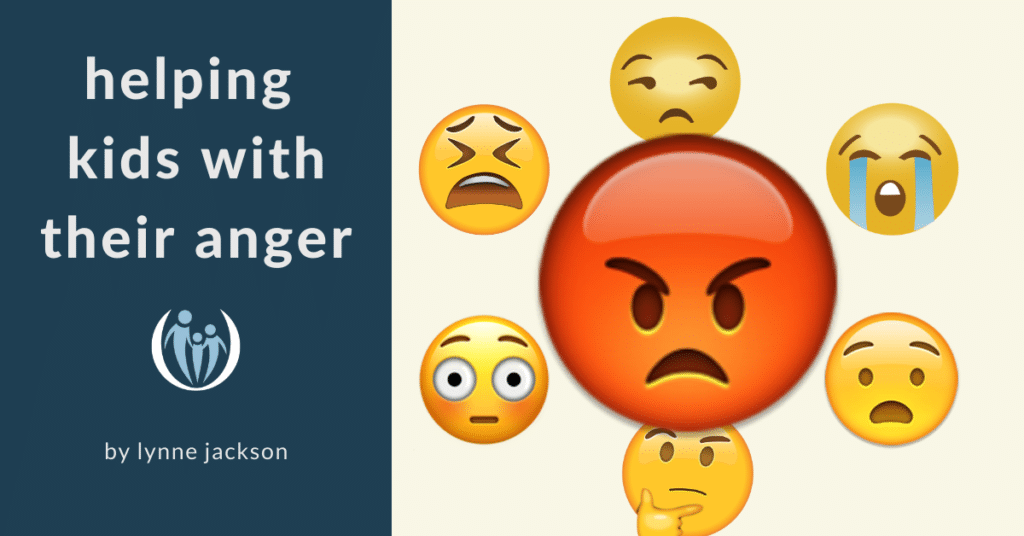
Helping Kids with Their Anger

Kids get angry sometimes. So do we. But is it pure anger, or is there something more? It turns out that much of what appears as anger is actually a more tangled and confusing set of feelings like fear, sadness, or discouragement. As we work towards helping kids with their anger, we may be surprised at what we find underneath.
Does this sound familiar?
“You never share your Legos! You’re such a jerk!”
“Math is soooo dumb. I can’t stand that class.”
“I hate this game! It’s stupid. It’s not fair!”
“You are just so mean. You’re the worst mom ever.”
The possible underlying feelings are numerous and can be hard for both you and your child to understand.
Why?
Because all those underlying emotions feel vulnerable! A typical response when we feel internally unsettled or vulnerable is to self-protect. We often hide those emotions under something that feels safer and more in control: a layer of anger.
Unfortunately, when what we show is our anger, that’s usually what we get back from others, and it escalates the conflict instead of solving it.
Helping kids understand this emotional dynamic can be a challenge. We’ve designed a fun activity for you, adaptable for different ages or learning styles. This activity will equip your kids with the insight they’ll need for fewer outbursts now and healthy relationships in the future.
Prefer to Listen?
Check out Episode 46 of our podcast “What Causes Anger Issues in a Child?”
Paper plate activity
(for visual or concrete learners)
At the end of this activity, your child will better understand that their anger is often covering other, more vulnerable emotions. Be sure to read through the entire article before trying this with your child. We include adaptations for different learning styles and ages in the article.
- Name a few common unhappy or heavy emotions your child might experience. (You can even do a google search for ideas.)
- Draw a face on the rounded back of a paper plate to represent each emotion, and talk about them until you feel your child understands.
- Draw an angry face on a paper plate. You can say: “Sometimes when we are angry, that anger makes us feel more powerful, but it covers up the real emotions we are feeling.” (Set the angry plate on top of one of the other plates.) “But the anger doesn’t actually make us more powerful, and it often causes more problems when people get angry back at us. Covering up with anger also keeps us from solving the real problems underneath.”
- Share with your kids about a time when you covered up an unhappy emotion with anger and what happened as a result. Demonstrate with the plates, and talk about what you wish you had done in your situation. For example, if you had understood how you really felt and what was important to you, how might you have solved the problem or calmed down more easily?
- Ask your child about a time when they might have covered up an emotion with anger. You can recount an example if they can’t remember and ask them about it. Help your child figure out what was underneath the anger and how they might solve the problem. For example, “When I’m worried and lonely, I can remember that Mommy is coming back after snack time.”
Once your kids understand the idea, keep modeling; refer back to this activity when you are having a hard time or feeling angry, and even let your kids help you figure out your emotions hiding under your anger.
For example:
“I had my angry face on just now, but I realized that underneath…
- “I’m worried we will be late for your doctor’s appointment.”
- “I’m sad you’ve hurt each other’s feelings.”
- “I’m overwhelmed that the house is such a mess.”
If parents work this into everyday, casual conversation, kids will understand this is an activity that is helping everyone learn and grow, not a parental plot to “fix my bad behavior.”
Lisa reported, “A week after our discussion with the paper plates, my intense 6-year-old, Karlie, was furious that she didn’t get a chance to roll out her crust for our homemade pizza. After I apologized and she had cooled down, I grabbed the plate stack. She pulled out the ones she felt that matched her emotions: concern and fear that it wouldn’t taste as good since she didn’t make it, frustration and jealousy because she had missed out on a favorite activity.”
That was a lot of insight for a 6-year-old! Plenty of adults can’t do that.
I touched base with Lisa for a long-term view of how this work has impacted their family. Her daughter is now twelve.
Karlie still gets big emotional outbursts sometimes, but the work we did in those early days has paved the way to calmly unpack what is going on underneath the outburst. I’m grateful that we can dialogue and work our way through feelings and events and that debriefing is expected versus ignoring outbursts. We approach those debrief discussions with the attitude of forgiveness and that we can all learn and do better the next time.
Over time this work can have a powerful impact. As you continue to model this, your kids may begin to spontaneously identify their underlying emotions or be open to your gentle question, “You seem really angry! I feel that way sometimes. Do you think there is another emotion under your anger? Figuring that out could help us make things better.”
Lisa stated, “Now, when my kids are mad, I acknowledge their anger and ask what else they think is going on underneath. We are doing much better at solving conflicts.”
6 key points in helping kids with their anger:
- Affirm any attempt your child makes to identify or be honest about underlying feelings.
- Lead the way with your authenticity and vulnerability.
- Poke a little fun at yourself and keep it all light-hearted. One of our team members shared this: “I had a good laugh with my 11 and 13-year-old girls when we showed each other our angry plates; they insisted I needed hair standing straight up on mine! We had some great discussions, and several months later, when I was in an argument with my mom (their grandma), they light-heartedly asked if we needed to get out some paper plates.”
- Keep it short; “leave ‘em wanting more.” Especially with young kids, start with a few basic emotions.
- Be sure to model it numerous times before inviting an upset child to look deeper into their anger.
- Don’t give up. Many parents we’ve coached have discovered that even if kids were resistant, silly, or distracted at first, when parents’ continued to model emotional awareness, kids learned from that example.
Equipping kids to navigate anger and conflict well is so important! In his book, Emotionally Healthy Spirituality, Peter Scazzero states, “Jesus shows us that healthy Christians do not avoid conflict. His life was filled with it! He was in regular conflict with the religious leaders, the crowds, the disciples – even his own family.”
It’s just what we do with our anger and conflict that determines if we sin or not. God guides us to be thoughtful in that process and do a little pondering to gain wisdom!
Be angry, and do not sin; ponder in your own hearts on your beds, and be silent.
Psalm 4:4
Talk about this verse and the next one with your kids. Then sometime when you’re about to blow your lid, model this by excusing yourself, “I’m gonna go do a little pondering!” and retreat to your bedroom. Pray about what is under the surface of your anger, and return with more wisdom, ready to share your insight and bring healing!
The words of the reckless pierce like swords, but the tongue of the wise brings healing.
Proverbs 12:18
This is not a quick fix, it’s a long process. But picture your child as an adult, working through an angry conflict in an important relationship. In that vision of the future, imagine them in an insightful conversation, sharing real feelings and desires as they solve the problem well. Not in a raging, destructive argument. There is hardly a more important skill if you want to equip your kids for a lifetime of rich, grace-filled relationships!
Adaptations for different learning styles or ages:
- For preschool or early elementary, draw a simple face for each emotion on each individual plate. Try this link for ideas on what to draw for each emotion.
- For elementary: consider one plate with an angry face on the front. Write the words for hidden emotions on the back.
- Tweens or teens: use a visual of the anger iceberg – either print one, draw it out, or just talk about the concept. Parents, focus on humbly modeling this before you ask kids about their underlying feelings.
- Watch Inside Out and talk about what you relate to. This might lead to deeper discussions about other things you use to cover up vulnerable feelings, like withdrawal or isolation, or working overly hard at something to distract us, etc.
Bonnie Williams, Certified Connected Families Parent Coach and former school counselor, shared,
“I attended a parent-student conference in regard to a middle school student who was struggling with anger. Before we started talking about concerns and how to “fix” the student, I gave the student the iceberg illustration and asked her to circle all the emotions that she related to. As she circled numerous words, the parents and school staff began to more clearly understand all the difficult feelings and stress she was under that were contributing to her angry outbursts. We reached a much better, more compassionate plan to help her.
In my 30 years of special education, I have found that anger and angry behaviors almost always have root causes in other underlying emotions. When adults take the time to ask curious questions and empathize instead of leading with only correction and consequences, then the heart of a child can be reached, and real change can begin.”
After you try this activity, take some photos and tag us on social media! (@connectedfams) We’d love to see what you came up with and inspire parents just like you.

Do you have a child with EXTRA needs?
Parenting isn’t easy, but when you’ve got an extra INTENSE or SENSITIVE child with big feelings… it’s even harder.
The Sensitive and Intense Kids online course will equip you to parent well, even with these unique kiddos.




